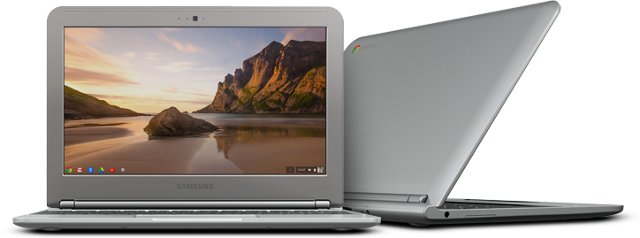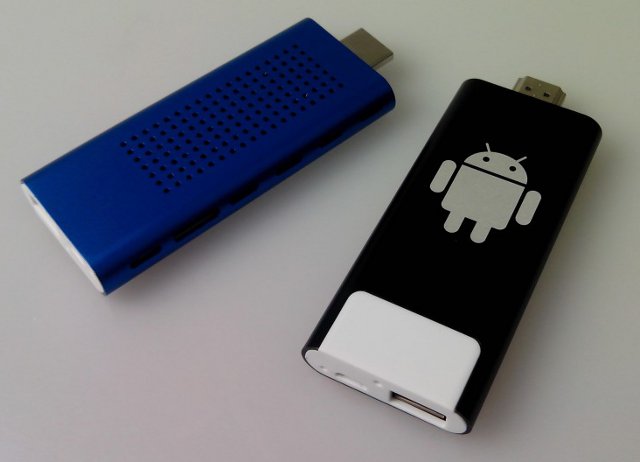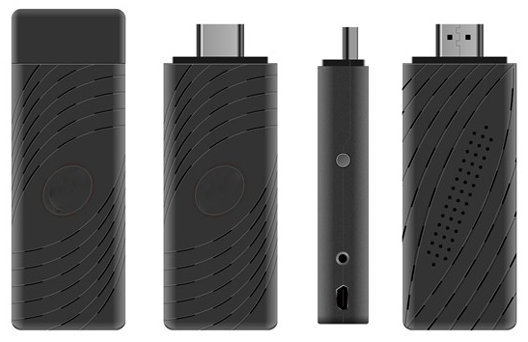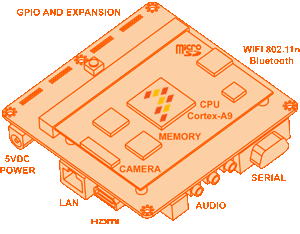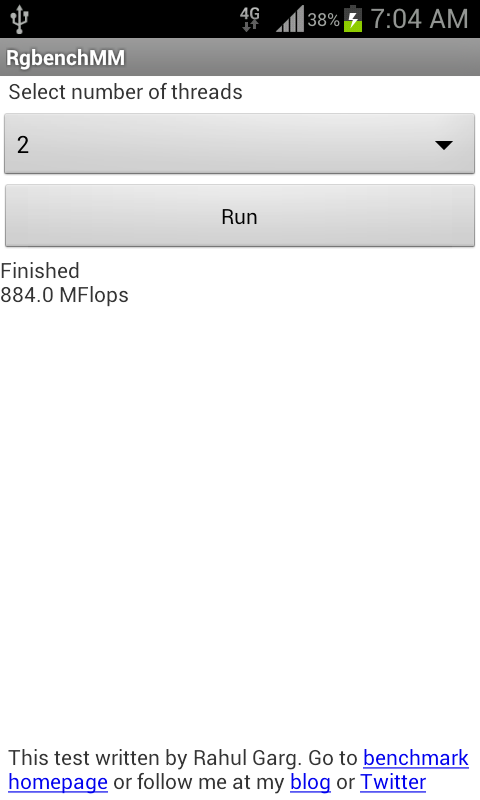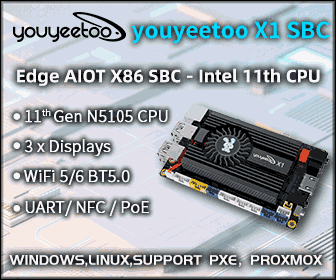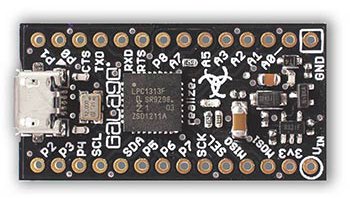Back in April, we already knew Google was working on a Chromebook codenamed ‘Daisy’ based on the latest Samsung Exynos 5 Dual Cortex A15 processor, and finally, Google officially announced their first ARM based Chromebook yesterday. The specifications of the new Chromebook are as follows: SoC – Samsung Exynos 5 Dual Core Cortex A15 Processor @ 1.7 GHz with Mali T-604 GPU System Memory – 2 GB DDR3L SDRAM Storage: 16 GB SSD SD Card slot 100 GB Google Drive Cloud Storage (Free for 2 years) Display – 11.6″ LED panel (1366×768) Video Out – HDMI Connectivity Dual band Wi-Fi 802.11 a/b/g/n Bluetooth 3.0 compatible (But Bluetooth does not seem to be present in the device) USB – 1x USB 3.0 and 1x USB 2.0 host ports Camera – Front VGA camera Battery – 6.5 hours typical use (No capacity info) Weight – 1.1 kg There’s no Ethernet contrary to […]
$89 Hiapad Hi802 Android mini PC Based on Freescale i.MX6 Quad Processor
The first (single core) mini PCs showed up in May, the dual core mini PCs in August, and the first quad core mini PCs should be available in November starting with Hiapad Hi-802 HDMI TV Stick powered by Freescale i.MX6 Quad Cortex A9 processor with 1GB RAM. The specs of the device are not available publicly, but based on diverse sources (including charbax video below), it should be as follows: SoC – Freescale i.MX6Q Quad Core Cortex A9 Processor with Vivante GC2000 GPU System Memory – 1GB RAM Storage – 16? GB NAND Flash Memory + microSD card slot Video Output – HDMI Connectivity – Built-in Wifi 802.11 b/g/n and Bluetooth USB – USB Host + USB OTG A picture of the PCB (one side only) has been uploaded by Hiapad. There are 6 through holes at the top left of the PCB which might be some debug ports (TBC […]
Droid Stick A2 – AMLogic AML8726-MX Dual Core Android 4.1.1 mini PC
Since it was first announced in August, Rockchip RK3066 dual core mini PCs have been popping up everywhere, and AFAIK those are currently the only low cost (sub $100) dual core Android TV Sticks available. But according to a recent Kimdecent announcement, this is about to change with the release of the Droid Stick A2 based on AMLogic AML8726-MX Dual Core Cortex A9 processor with 1GB RAM and 4 to 8 GB Flash running Android Jelly Bean. Here are Droid Stick A2 specifications: CPU – Amlogic AML8726-MX Dual Core Cortex A9 @ 1.5 GHz GPU – Mali400 Dual Core, 2D/ 3D/ OpenGL ES2.0/ OpenVG1.1. System Memory – 1 GB RAM Storage – 4/8 GB Nand Flash + microSD card slot (up to 32GB) WiFi – 802.11b/g/n Video Output – HDMI (1080P) Video Decoding – Supports up to 1920x1080p@60fps Video Encoding – Supports encoding in H.264. 1080p@60fps, 720@100fps USB – 1xUSB […]
$69 – $89 Wandboard Freescale i.MX6 Solo and Dual Development Boards
The Wandboard is a low cost Linux ARM Cortex-A9 ARM board comprised of a CPU module and an interface board. There are actually 2 versions of the board (single and dual core) which are developed by a team of engineers during their spare time: Wandboard Solo – $69 – Freescale i.MX6 Solo + 512 MB RAM Wandboard Dual – $89 – Freescale i.MX6 Dual + 1 GB RAM Both boards come with Audio I/O, Optical S/PDIF, HDMI, a camera interface, 2 micro SD cardslot, a serial port, an expansion header, USB and USB OTG ports, a SATA connector and Gb Ethernet. The dual version also adds Wifi 802.11 b/g/n and Bluetooth support. There are not so many boards with native SATA support, so for those of you who need SATA this could be really be a good option. [Update: Although there’s a SATA connector on the baseboard, this is not […]
FPU and Memory Android Benchmarks: RgbenchMM & RgBandwidth
There are already a fair amount of Android benchmarks such as Antutu or Quadrant, but how those benchmarks work exactly is unclear and the number they return have no direct meaning, until you start comparing results to other device results. This is why Rahul Garg, a PhD student at McGill University, has written 2 new benchmarks to test FPU and memory bandwidth with known benchmark procedures and results in MFlops and MB/s which are both available on Google Play Store: RgbenchMM– A benchmark to test the floating point performance performing double-precision matrix multiplication and fully multi-threaded to support multiple cores. It’s programmed in C++ using Android NDK, and works with ARM and x86 devices running Android 2.3.3 and greater. RgBandwidth– Asimple memory bandwidth test which tests memory copy performance (in “Simple” mode), and uses tests derived from the STREAM benchmark (“Misc” tests). This can be used to get an estimate […]
Linaro 12.09 Release with Kernel 3.6 and Android 4.1.1
Linaro release 12.09 has just been announced, and includes Linux Kernel 3.6-rc6 and Android Jelly Bean. This release provides further improvement to Android Jelly Bean, Android benchmark characterization, an ARMv8 OpenEmbedded image, UEFI bootloader support for Vexpress, origen and pandabords, and some improvement to big.LITTLE and power management. Here are the highlights of the release: Android All Linaro patches are now available on Jelly Bean. Accelerated graphics is now available on Snowball Jelly Bean build. AndEBench, AndEBench Java, Linpack, CaffeineMark, Antutu 2D and 3D, NBench, Quadrant, I/O Benchmark, Vellamo benchmark hotspot characterization available. An Origen tracking build is available and will be released this cycle as a Linaro Evaluation Build (LEB). Audio works on Origen running Jelly Bean (WAV file only). A Monkeyrunner script to run Streamline has been completed. First rev of the NI PXIe-4154 based power measurement system is created. See http://www.youtube.com/watch?v=9bKyuxLl4iw&feature=plcp In-tree AOSP tests have been automated. […]
uClinux on Cortex-M3/M4 MCU: The Costs, Performance and Power Consumption
I previously wrote about different options available to run Linux on Cortex M3 & M4 Microcontrollers, and more recently Vladimir Khusainov, co-founder and Director of Engineering at Emcraft Systems,wrote a longish article entitled “Practical Advice on Running uClinux on Cortex-M3/M4” on electronicdesign.com, where he explains how SoM are usually selected, the costs of running uClinux on Cortex M3/M4 MCUs such as Freescale K70 or STmicroelectronics STM32F2/F4, as well as performance and power consumption considerations. First, Vladimir addresses one comment that says there’s basically no use for uClinux on Cortex M3/M4 MCU, since external memory is needed and an ARM7/ARM9 modules (with MMU) can be purchased for almost the same price. There are 2 counter arguments to this point of view: In practice, customers usually select an hardware platform first, then think what OS can be used on the platform. For example, if a company decided to use an hardware based […]
$25 Outbreak Galago – Cortex M3 Open Hardware Development Kit
Outbreak Galago is a tiny development kit based on a Cortex M3 processor that fits a debugger, and is destined for rapid electronics prototyping. The company promotes it as some sort of Arduino board on steroid (MCU wise) and sells for $25 on kickstarter, and less than $10 in 10k quantities. Here are the board specifications: 72 MHz 32-bit ARM CPU with 32KB of flash ROM and 8KB of RAM (NXP LPC1313 TBC) Integrated hardware debugger One high-speed SPI port, up to 36 Mbps One high-speed I2C port, up to 1.5 Mbps One UART/USART with hardware flow-control capability, up to 256 kbps 10 high-speed PWM pins, 6 driven by 32-bit (high-resolution) timers 6 ADC (analog) input pins with 10-bit resolution at over 400 KSa/sec 25 GPIO (digital) input/output pins The form factor and built-in debugger (via USB) are not really new, as those are already featured in devkit such as TI Piccolo controlSTICK, […]


